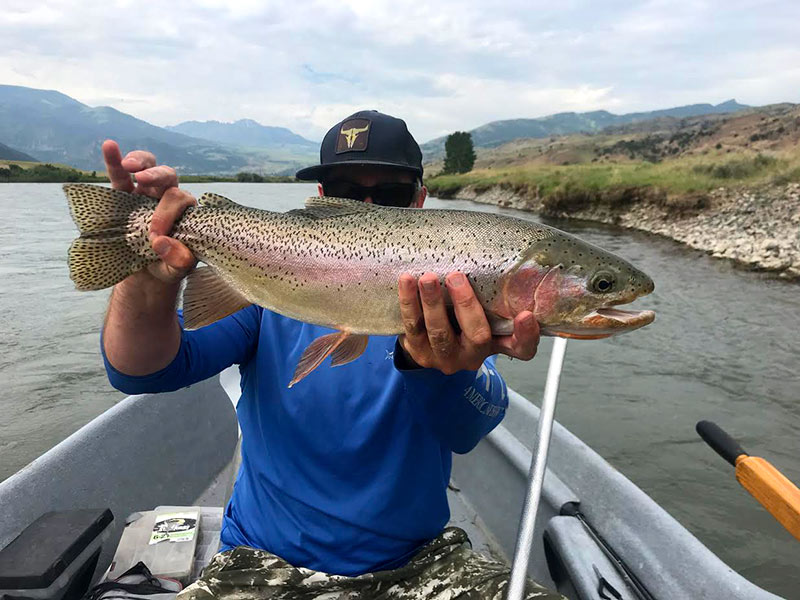The hybrid cut-bow trout is the combination of a rainbow and a cutthroat trout. Because rainbows and cutthroats are so genetically similar, hybrid cut bow trout commonly occur naturally. Because rainbow trout are not native to Montana and the Yellowstone area, cut bow trout are technically not native either; despite this, wild cut bow trout are common in the area and offer an exhilarating fight to any angler lucky enough to hook into one. Cut-bow trout can be identified by their rainbow-esque bodies, with a red or violet stripe down the torso and black spots evenly distributed across their body; additionally, most cut bows will feature a red stripe along their jaw like cutthroat trout. On cut bows, the red stripe can be as pronounced as a native cutthroat, or hardly noticeable. No matter what the cut bow you catch looks like, you can be sure that it will put up a fight you won’t soon forget.

Hybrid-cut bow trout mirror the average size of rainbows, often reaching 16 to 20 inches of length in maturity, with fish in the two-foot range far from unheard of. Rainbow trout and cutthroat trout are very similar genetically, so in many waterways interbreeding is common, and cut bow trout are the dominant species. Cutbows live anywhere where cutthroat and rainbow trout coexist, which is a large percentage of Montana’s rivers and lakes. Anywhere where there is cold water and abundant insect life, cut bow trout will be found, so don’t be surprised to find a rainbow-looking trout with a bright red jawline in any of your favorite waterways!
Unlike many other hybrid trout species, cut bow trout are not infertile. Instead, they spawn like a rainbow and cutthroat trout do in the spring. Cutbows are capable of producing offspring with all three of these species, meaning that each cut bow in a river or lake will have a different percentage of cutthroat and rainbow genes. This is why cut bow trout can closely resemble either rainbow or cutthroat trout. Like all other trout, female cut bows will beat their tails into the floor of a shallow and fast-moving section of a river to create a spawning bed known as a “redd.” They then lay their eggs in this bed for a male rainbow, cut bow, or cutthroat trout to fertilize. The exact time of the spawn for cut bow trout varies depending on when the waterway they inhabit reaches prime temperature for spawning, usually between 45 and 52 degrees. So, if you notice an off-colored streak of gravel in a fast-flowing stretch of water between April and July, with or without large fish on it, please make sure to avoid fishing or walking over this section. Otherwise, cut bow trout are fantastic sport fish because of their aggressive feeding habits and tenacious fighting tendencies. Cutbows are often willing to eat anything from small nymph rigs to large dry flies; if you match the hatch, there’s a good likelihood that you will find a cut bow willing to eat your flies. Make sure to hold on, because you’ll be in for quite a fight!